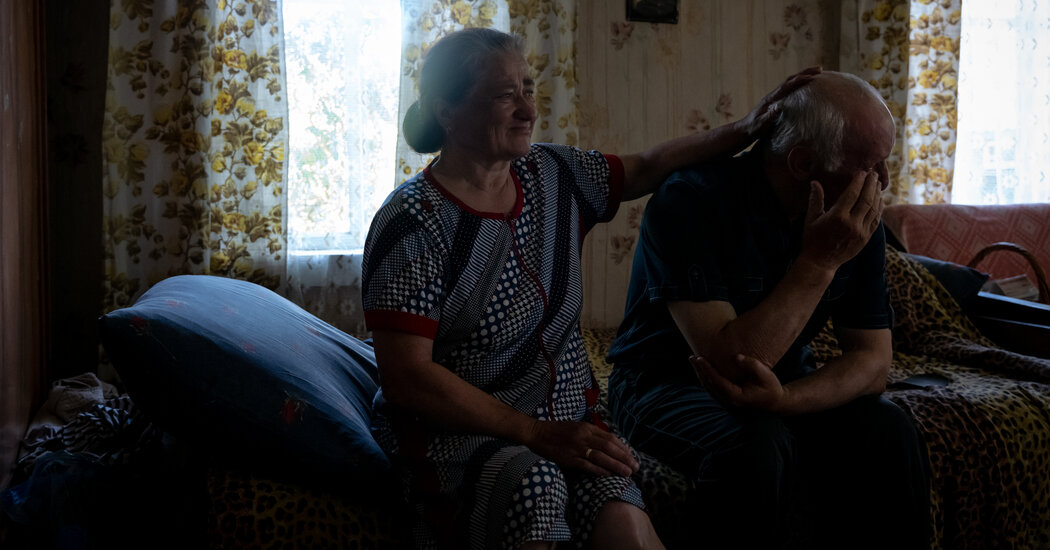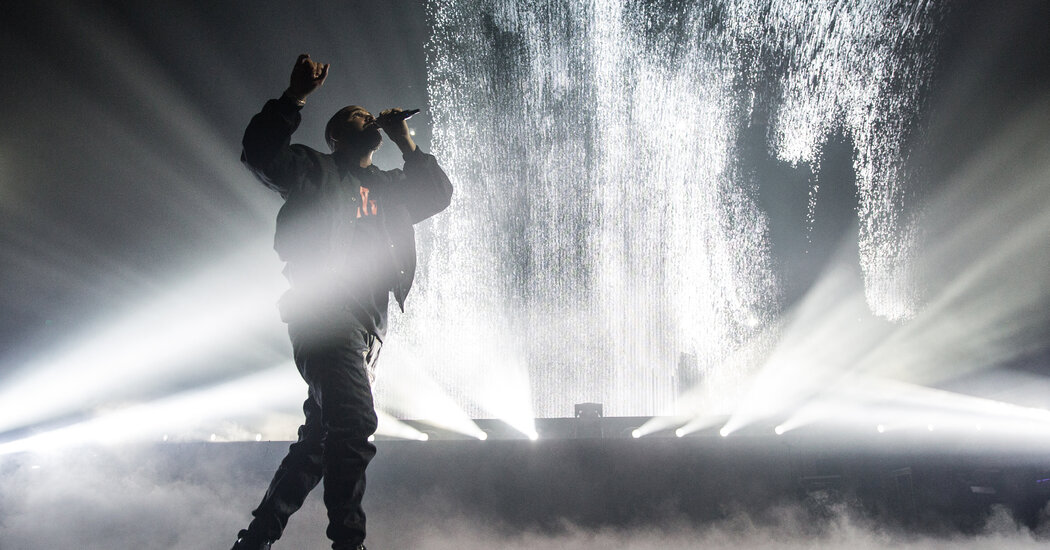
MOSHCHENKA, Ukraine — The tanks are gone now, and the thousands of Russian soldiers who poured into northern Ukraine in February have retreated back across the border.
But fear still prevails in this quiet village only six miles from Ukraine’s border with Russia and Belarus.
In the distance, Russian artillery shells rock the neighboring towns every day. Their explosions send a shudder through residents who lived through weeks of Russian occupation and have not forgotten the intimidating presence of Moscow’s army as it marched by on the way to Kyiv.
“We are scared of every sound,” said Kateryna Krasnomirova, who is living in temporary accommodation in Moshchenka because her home in Senkivka, even closer to the border, is being shelled daily.
“We are living in terror.”
By the beginning of April, Ukraine had pushed the invading forces away from Kyiv and back over the Russian border, its biggest success of the war and a symbol of the country’s resolve. But for villagers in the region, the retreat did not deliver a sense of security — or even a return to normal life.
Except for the absence of Russian troops, there is little to suggest this is not a war zone. Ukrainian guards and soldiers regularly patrol the border. There are checkpoints every few miles along all the north-south roads. Plots of farmland are marked as minefields, and mazes of trenches fan out in several directions from each checkpoint. At the entrance to Moshchenka, anti-tank obstacles fashioned from local birch trees and barbed wire guard the checkpoint.
Olena and Mykola Kalivoshko, retirees from Senkivka, have also moved to Moshchenka to escape the shelling. They are living in the home of a villager who recently died.
“We counted 14 explosions yesterday,” said Ms. Kalivoshko, 65. “We want to go home, but we don’t know if we will be able to, so we have already started preparing wood for the winter.”
The couple may very well need that wood.
“Putin has not given up on a plan to destroy Ukraine, and this requires capturing Kyiv,” said Oleksandr Turchynov, who served as acting president of Ukraine for several months in 2014, when Russia annexed Crimea and Russian-backed separatists took control of most of the Donbas region. “So as long as the war continues, there will be the danger of another invasion from the north and storming the capital.”
Trying to capture Kyiv with an immediate assault from the north turned out to be a misguided goal for Russia, ending in failure. Still, many analysts believe that taking the capital and toppling the Ukrainian government remains President Vladimir V. Putin’s ultimate goal, even as he has limited the scope of Russian military ambitions, for now, to the Donbas region of the East.
Better Understand the Russia-Ukraine War
Local officials say they don’t want a repeat of what happened in February, when civilians were caught off guard by the invasion, their lives suddenly upended, even though the Kremlin had signaled its intentions for months.
“We make sure that a doctor makes the rounds to all the villages every few weeks, because locals fear that at any moment their territory could be cut off,” said Volodymyr Pinchuk, the deputy mayor of Horodnya, the largest city in the region. He said residents’ memories of several thousand Russian tanks rumbling through the city in February for 48 hours straight would not be soon forgotten.
There are more than just psychological factors at play. In this war of attrition, Moscow’s strategy is to force the Ukrainians to defend as much of their exposed borders as possible, even where there is no fighting.
Ukraine needs to defend its borders with Russia in both Chernihiv and Sumy provinces in the north. In the southwest, Ukraine needs to defend its border with Transnistria, the breakaway pro-Moscow province inside Moldova. And then there is the active front line in the east, from the southern Kherson province to the northeastern Sumy region, which is more than 750 miles long.
The country also has to defend its 600-mile border with Belarus, a Russian ally. Joint Russian-Belarusian military exercises in January and February gave Moscow a pretext to send equipment and soldiers to the border, from where tens of thousands of Russian soldiers launched their attempt to capture Kyiv.
“The Russians are trying to pin down as many Ukrainian forces in other places as possible, by posing latent threats to them,” said Gustav Gressel, an analyst with the European Council on Foreign Relations.
“That’s why Belarus is conducting military exercises on June 22, it is why the Russians are using artillery to shell Chernihiv, why soldiers in Transnistria were mobilized: to keep the Ukrainian forces spread out,” Mr. Gressel said.
Russia is trying to keep the Ukrainians on watch in all those regions. Border guards have detected Russian diversionary groups trying to enter their territory at night, said a local guards chief, Serhiy Homenko.
Ahead of the Belarusian military exercises, the Ukrainian army forces in the region are being kept on high alert.
“Units are being brought to higher levels of combat readiness, practical measures are being taken to accept conscripts, weapons and military equipment are being removed from storage,” a spokesman for the military’s operational command wrote on Facebook on Sunday.
Access to the area is highly restricted, even to the volunteers ubiquitous in other parts of Ukraine. The border service and the army have a strict ban on journalists and civilians approaching the border.
Mr. Pinchuk, the deputy mayor of Horodnya, said the fear among civilians was accompanied by a sadness specific to this northern region.
At this triple border stands a monument built in 1975 at the spot where the three nations converge. Known as the “Three Sisters,’’ it celebrated the unity of what were thought of during Soviet times as the union’s three Slavic peoples.
Many people in the area speak “Surzhyk,” a local combination of Ukrainian, Russian, and Belarusian. A museum of national friendship and an annual music festival took place on the site.
“Thousands of people came every year and slept in tents, played sports, got to know one another, and watched performances,” remembered Nataliya, who worked in the Three Sisters museum in Senkivka for 26 years, declining to provide her last name for security reasons.
The festival ended in 2014, when Russia annexed Crimea and backed separatists in Ukraine’s Donbas region. But many local residents have family ties across the borders. The disintegration of a sense of shared comradeship has left a veil of melancholy over the region.
“We couldn’t believe these friendly nations, our sisters, could attack us,” said Nataliya, sobbing. “What is this war?”
Some residents living close to the Belarusian border sought refuge with relatives there, Mr. Pinchuk said, but soon returned because of disagreements over the war.
“They came back, because they could not find a common language with their relatives,’’ Mr. Pinchuk said. “A brother told his sister what was happening, but the sister believed the propaganda on TV instead. People have become zombified.’’
The Kalivoshkos, the retirees from Senkivka, said they had one son in Belarus and one in Kyiv. Mr. Kalivoshko was brought to tears as he began talking about his younger son in Belarus.
“We are praying to God every day,” he said.
“He doesn’t have information about the war,” Ms. Kalivoshko said sadly.
In mid-May, the local authorities in Ukraine decreed that the Three Sisters monument should be destroyed. They are mulling putting up something else instead.
“With neighbors like these, we need a wall,’’ said Mr. Homenko, the border guards commander. “Or at least a lot of mines.”
Evelina Riabenko and Oleksandr Chubko contributed reporting.




